Last updated: February 13, 2024
My granddaughter pointed out a muscular horse with a shiny blue-tinted coat and dark legs and asked, “what coat color is that.” The horse’s owner overheard her question and quickly answered, “it’s a grulla quarter horse,” and walked away. Of course, she raised her eyebrows and inquired, “what’s a grulla.”
A grulla quarter horse has a specific color pattern, black legs, no red hairs, and dun markings. All grulla horses carry a black gene and have primitive marking created by a dun gene—the unique color of grullas ranges from light hues of shiny blue to dark brown and almost black.
Most quarter horse owners desire the grulla coat color pattern for its unique look. But what makes a grulla quarter horse so desirable? Is there more to Grulla’s than their color?
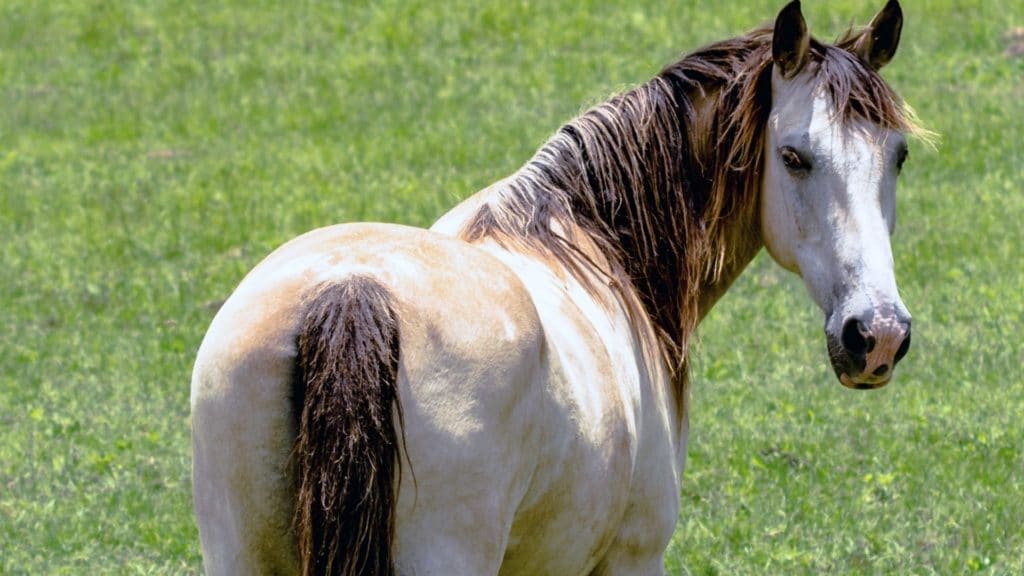
Grulla quarter horses are special.
What colors make a grulla?
Grulla is a unique color coat pattern created by the horse’s genetic structure. Genes are the building blocks of coat colors. Their arrangement and effect aren’t simple to understand, but I’ll try to explain them as clearly as possible.
Genes are inherited and occupy a location on a chromosome and control the characteristics of living organisms. These units exist in different forms and can be mutated by other genes.
All horses start with a primary coat color of either red, bay, or black. Two allele genes control these base colors, one that allows the color to express in its coat, and one that directs black pigments to locations.
The allele that is expressed is known as dominant and visibly affects the coat color. An unexpressed allele is called recessive and does not affect the pattern, and it’s often referred to as an invisible gene.
The allele that is expressed is known as dominant and visibly affects the coat color. An unexpressed allele is called recessive and does not express and is often referred to as an invisible gene.
Grulla quarter horses have a black base; in quarter horses, black is recessive. Horses with black coats will have an E/E or E/e genetic identifier.
Grulla quarter horses have dark points.
Grulla’s also have black points, which occur because they carry a gene modifier, the allele, that steers black pigmentation to the horse’s points.
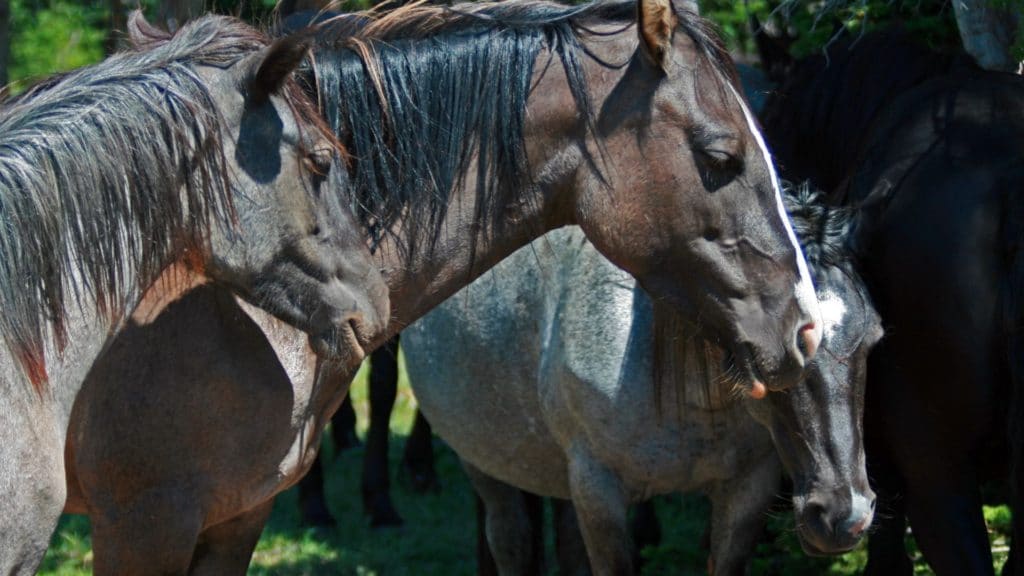
Points are the horse’s outer extremities, lower legs, ear tips, tails, and manes. The next coat pattern factor is the primitive markings. Primitive markings typically include a dorsal stripe, webbing on the upper legs, and a stripe across the withers.
Grullas have primitive markings.
The markings’ visibility varies in intensity, but you can usually see the clean, crisp stripe running down the center of their back. These markings are present because of the influence of a dun factor.
Dun is created by a dilution gene that causes a horse’s base coat to lighten without affecting the primitive markings and points. Dun genes are dominant and represented by a “D.” Grullas can have only one dun gene and still be a grulla.
In simple terms, a grulla is a dun dilution of black hair. The dilution creates a slate-gray or mouse color with dark points, primitive black markings, and dark eyes.
Grulla quarter horses are rare.
Less than one percent of registered American Quarter horses are Grulla’s. Time changes our ideals of what is beautiful. The striking look of a grulla horse is breathtaking for those who appreciate it. After much arguing, this coat color is becoming more accepted.
In fact, it is becoming more desirable, and that creates a small problem. The Grulla coat color tends to be rare. For a mare to have a grulla foal, she has to have both the dun and black gene available.
It helps if it’s in both bloodlines, but even that doesn’t mean the offspring will be grulla. Breeders are working on the problem, and some have more success than others. Some breeders claim they have loud genes for their horses.
They are more likely to produce a grulla or grullo, although it isn’t a perfect solution. It must be pointed out that grulla and grullo horses do have one potential problem.

Grulla quarter horses are susceptible to melanoma.
While any horse can develop melanoma, this coat color is more likely to do so. Eighty percent of the grulla/grullo horses will develop it as they get older. The good news for quarter horse owners; is that their breed is less likely to develop it.
The good news about the melanomas found in gray horse syndrome is that they tend to be benign. That doesn’t mean they should necessarily stay. As they are usually around skinless or nearly skinless areas, they can make it more difficult for the horse to pass its manure.
The anus is one location they are often seen in and geldings may have them in the sheath, which could make urinating difficult. If you see melanoma, call your vet.
There are treatment options, including tumor removal. Soon there may be a vaccine against it for horses. There already is one for horses.
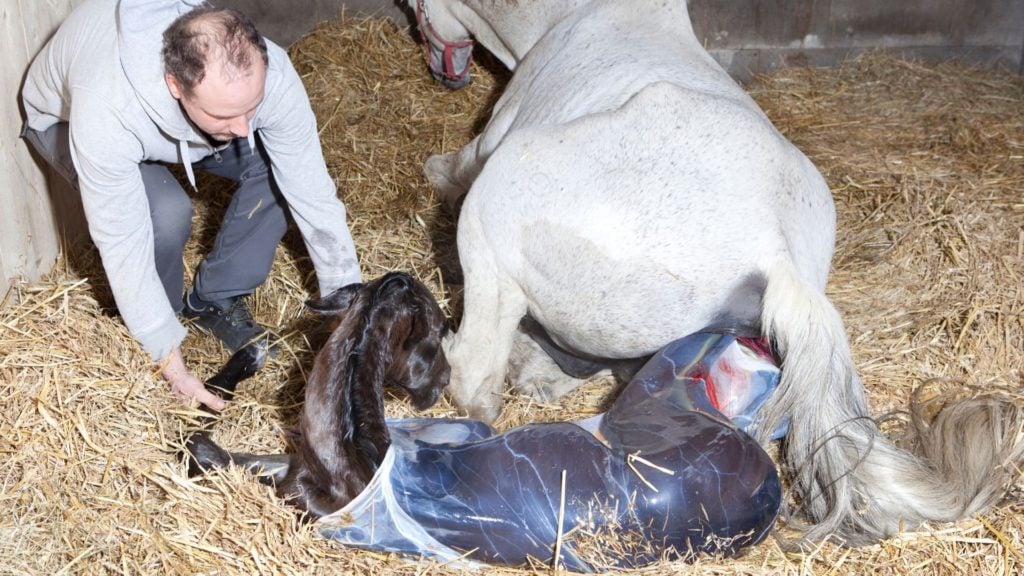
Grulla foals don’t change color.
Grulla and grey quarter horse foals can look similar at birth. But the two coat colors distinguish as they age. Grey foals typically lighten, and grulla foals stay the same color they are born.
Is the grulla color pattern only in quarter horses?
Grulla’s are not common in any breed but are found in many. In fact, twenty-seven other breeds can show the grulla/grullo coat pattern.
Besides the American Quarter Horse Association, the International Buckskin Horse Association also accepts grullas for registration.
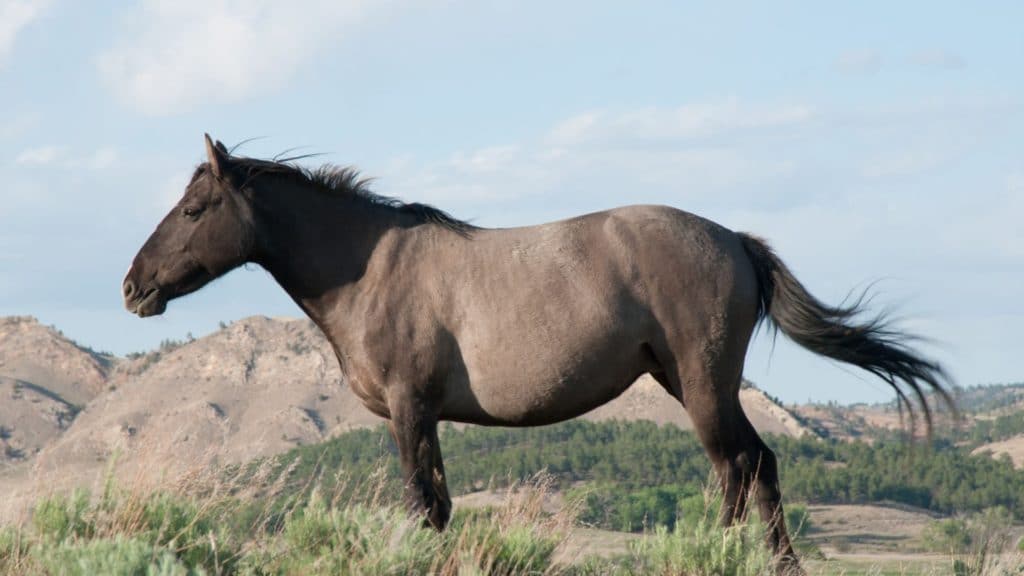
The evolution of the grullo color pattern.
Grullo is Spanish for a gray horse. Grulla is the feminine, or mare’s coat color… but they are the same. To understand the genetics that created the grulla horse, one needs to go back to the modern horse’s ancestors.
The hyracotherium, also called eohippus, was the ancestor of all horses and is interpreted as “dawn horse,” and is the earliest ancestor of equines. Eohippus didn’t look a lot like the horses we know today.
In fact, at first, it wasn’t clear that there was a relationship between them. Imagine a horse-like creature that actually had pads instead of hooves. That would make it harder to recognize and there were a lot of other differences as well. The dawn horse was usually a little over four hands high.
These ancient creatures, ancestors to horses, were native to North America. Luckily there are fossils available because we have to rely on what genetic material is available in eohippus fossils to guess at coat colors. It is thought that the coat was basically dun with spots on it.
As the horse evolved, changes occurred in its legs, hooves, teeth, and coat. The smaller brain of the eohippus was gradually made larger, and the leg bones fused.
The orohippus was next in the chain. It maintained the dun coloring, though it was still not a true horse in the way we think of them. It had longer rear legs and could jump well.
Orohippus means mountain horse, although it didn’t live in the mountains. It was still a long way from our modern equines. Mesohippus is sometimes referred to as the middle horse.
There are several types of these equines and many fossils were found in North America. The climate changed, and the mesohippus had to adapt to survive. It became taller, with teeth better designed for eating grass. It was also most often of diluted coat color, making grulla possible.
Kalobatippus crossed the Bering land bridge during the Miocene period. This may have been one of the ancestors of the Asian and European horses later developed.
Coat color still hadn’t changed that much, but it was beginning to look more like the modern horse, especially in the tooth department. Equus, or modern horses, were several species after the Kalobatippus.
It also crossed the Bering land bridge and went into Asia and Europe. These were true equines but not all the same. They also include donkeys and zebras. They migrated east and south; zebras went all the way to Africa.
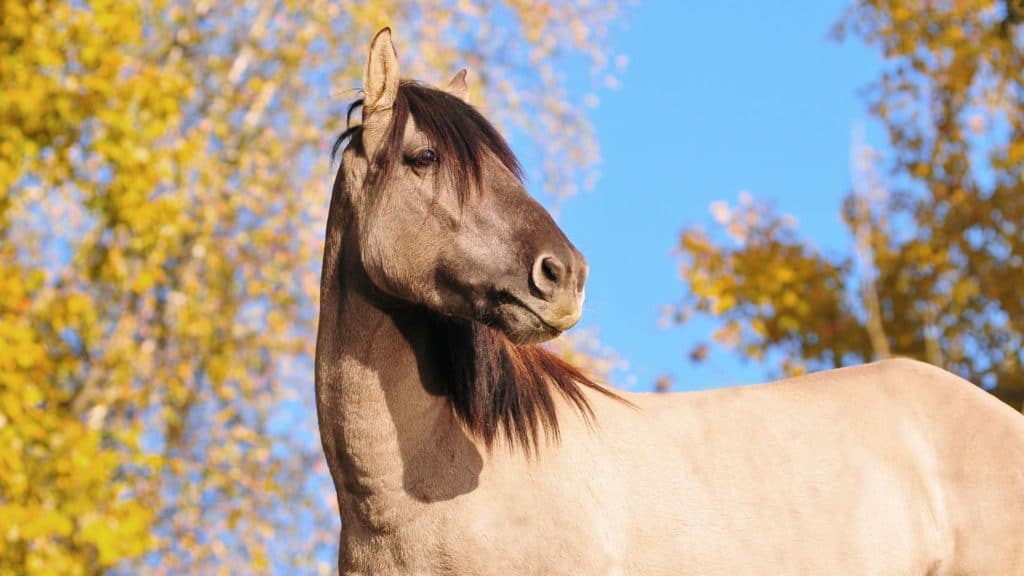
There are similarities between these three equids. They are relatively easy to see on any dun coat; the striping remnants can show through if the horse is light enough colored.
Our interest stays in the horse line and will continue to adapt as the weather and terrain permit. The first to ride the horse was most likely hunters.
Coat colors still hadn’t changed much, although some darker variations eventually began to develop. Many ancient societies began to use horses, especially for their armies.
It wasn’t until the time of King Solomon that they made an appearance in Ancient Israel. The Romans perfected horseback riding. The Romans also enjoyed chariot racing.
It is to be imagined that chariot racing arrived well before the Romans. Human beings are competitive, and the first two charioteers probably raced each other to see who was faster.
At this point, there were six coat colors. That began to change as the different breeds of horses changed. While up to this point, diluted coats had been the norm, as horses moved south and west, different coat colors were developing.
Grulla coat colors are created through dilution.
Soon there were nine colors, and the dilute wasn’t always predominant. The grulla horse came out of these changes; it is a dun variation on a black coat. If you look at pictures of grulla/grullo horses, you can see that the mane, tail, and legs are darker.
There is a dorsal stripe, and the legs have points. These make striking coloration, but at first, they were not an acceptable horse color in many breed registers.
Below is a YouTube video with some grullo horses.
Related articles:
- Dapple Horses: What Makes Their Coat Color Change? 5 Keys
- What is a Blue Roan Horse? Breeds, Names, Colors, & Pictures
- What is a Dapple Gray Horse? Breeds, Facts, and Color
- Are Chestnut Horses and Sorrel Horses the Same Color?
- Registered Thoroughbred Horses: What Colors Are Permitted?
- Colors of a Classic Roan Horse
- Buckskin Horses: Facts, Colors, Origin, and Characteristics
- Palomino Horses: Facts, Characteristics, and Unique Colors
- What Is A Bay Horse? The Facts Behind the Coat Color
- What Is A Sorrel Horse? Is Sorrel Just Another Word For Red?
Resources:
- https://myhorsenames.com/grulla-horse/
- https://www.horsebreedspictures.com/horse-colors/grulla-horse
- https://www.britannica.com/animal/horse/Evolution-of-the-horse
- https://www.sciencedaily.com/releases/2016/12/161207091114.htm
- https://returntofreedom.org/wild-horse-nation/evolution/
- https://www.equine.umn.edu/research/equine-genetics-and-genomics-laboratory/current-projects/gray-horse-melanoma
- https://www.veterinarypracticenews.com/equine-melanoma-types-and-treatments/

About the Author: Miles Henry
Lifelong Horseman | Racehorse Owner | Published Author
Miles Henry brings over 25 years of hands-on experience training and owning Thoroughbred racehorses. Raised with Quarter Horses and Appaloosas, he’s spent a lifetime learning from horses—on the track, in the barn, and in the field. Today, he runs a small but successful racing stable in Louisiana and shares real-world insights on HorseRacingSense.com, helping horse owners, fans, and bettors navigate the sport with confidence.
📚 Books: View Miles’s books on Amazon »
🎧 Podcast Guest: Animal Tales Ep. 32 |
YouTube Interview
📩 Newsletter: Sign up for racing tips and horse care advice »
🔗 Follow Miles:
Twitter |
Facebook |
YouTube


